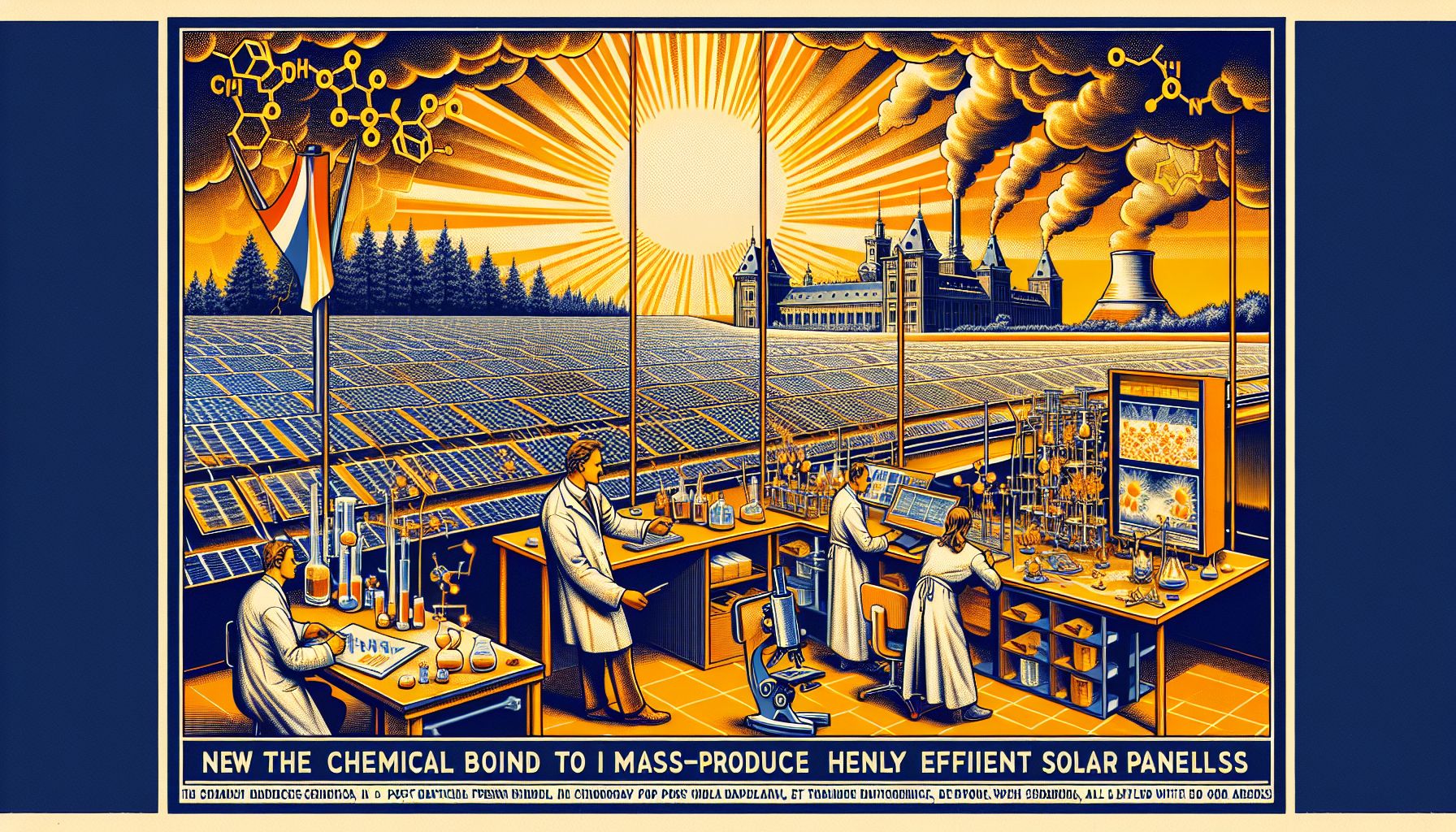Breakthrough in Solar Panel Production Boosts Efficiency in the Netherlands

Netherlands, Sunday, 23 March 2025.
Dutch scientists have developed a method to mass-produce efficient solar panels using new chemical bonds, significantly enhancing energy output and potentially transforming the renewable energy sector.
Revolutionary Chemical Innovation
Scientists have achieved a significant breakthrough in solar panel production by introducing a substance called pyrrodiazole (PZ) that simultaneously stabilizes two key components in the light-sensitive material [1]. This innovation addresses a persistent challenge in scaling up laboratory successes to mass production by ensuring more uniform material hardening and creating larger, continuous crystals that enhance energy conversion efficiency [1].
Performance Metrics and Durability
The new technology has demonstrated impressive results, achieving a remarkable efficiency rate of 20.3% in testing [1]. More importantly, the panels have shown exceptional durability, maintaining 94% of their original efficiency after 1,000 hours under artificial sunlight conditions [1]. This development comes at a crucial time when the Netherlands is actively expanding its solar infrastructure, with the country already achieving a solar power density of 73 W/㎡ in 2023 [4].
Market Impact and Industry Response
The timing of this breakthrough aligns with significant industry developments in the Netherlands, as evidenced by the recent Solar Solutions Amsterdam event in March 2025 [2][4]. The exhibition, which attracted over 600 exhibitors, showcased how the Dutch market is particularly focused on high-efficiency components and building-integrated photovoltaics (BIPV) solutions, driven by land resource constraints [4]. This new production method could potentially address these specific market needs, especially considering that industrial and commercial roofs account for 61% of new installations [4].
Future Prospects
While current testing has been limited to 10x10 centimeter modules [1], the technology shows promising potential for larger-scale applications. This development could significantly impact the Netherlands’ renewable energy landscape, where over 83% of solar systems are distributed installations [4]. The advancement comes at a critical time as the country aims to add 2.1 GW of new installed capacity in 2024 [4], potentially accelerating the nation’s transition to sustainable energy sources.

